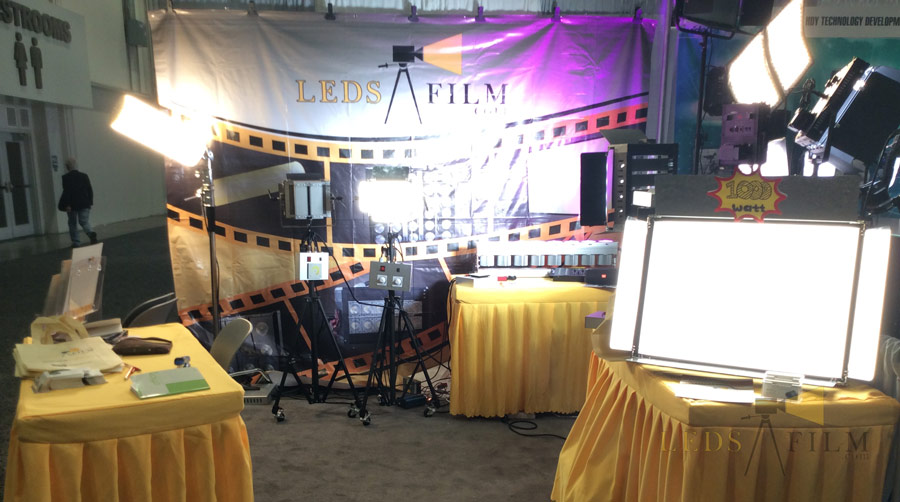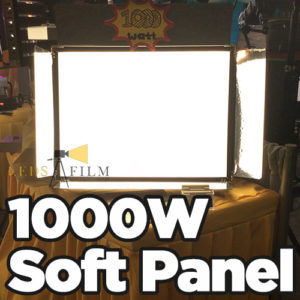Table of Contents
What is light ratio & Main affecting factors
Light ratio refers to the brightness ratio between the light receiving surface and the shadow surface of the object, which is an important parameter of light for photography. When the light ratio is large, the images in the photographic works are hard in tone, few in level, strong in three-dimensional sense and large in contrast.
when the light ratio is small, the images in the photographic works are soft in tone, rich in level, poor in three-dimensional sense and small in contrast. In photography, the light ratio should be determined and adjusted according to the situation of the subject and the photographer’s creative intention. The light ratio is determined by 1:2 ∩ power.
Affecting Factors:
- The influence of light level. The light ratio of the subject is small under the illumination of the positive light plane, moderate under the illumination of the front light, and large under the illumination of the back light and the side back light.
- The influence of light quality. The ratio of direct light is larger than that of scattered light.
- The influence of climate. The light ratio of sunny days is higher than that of cloudy days, rainy days and snowy days.
- The sunlight ratio is bigger in summer and smaller in winter.
- It is the influence of light luminous power. High luminous power, high light ratio, low luminous power, low ligh.
- The influence of light source distance. The light source distance is close, the light ratio is large; the light source distance is far, the light ratio is small.
- It is the influence of different lamps. Spotlight lighting, light ratio is large. scattered light and white light lighting, light ratio is small.
The classification of movie tunes
Keynote refers to the dominant tone in the photographic picture, also known as “main tone”. The main function of the tone is to set off and express the theme, express the atmosphere of the real environment, and strive to form a certain artistic conception.There are three kinds of tone in black and white photography works:
★High profile photo: refers to the image composed of medium gray to white tone in the photographic picture, that is to say, more than 80% of the images in the picture are light or white. High profile photos can give people a bright, pure and beautiful visual feeling, mainly with positive lighting.
★Midtone: It is the most common tone structure in photographic images. The image consists of black to white layers in the form of rich tones, with mid-tone gray dominating. It can fully show the subject’s three-dimensional sense, texture and rich sense of space, giving people a sense of harmony, tolerance, delicacy and depth.
★Low key photo: it refers to the image with medium gray to dark or black tone in the photographic picture, that is to say, more than 80% of the images in the picture are dark or black, with only a small amount of white. When shooting low-key works, choose dark or black background, and backlight or side backlight lighting. It gives people a deep, solemn and solemn visual feeling.
Contrast of tone
- Soft tone photo: it refers to the soft tone, small contrast between light and shade, excessive levels in the middle and deep depiction of details in the photographic picture, which often gives people a soft, delicate and implicit visual aesthetic feeling.
- Hard tone photo: refers to the picture tone contrast is strong, with simple visual effect. When the picture was shot, the larger light ratio had formed a larger contrast. After dark room production, the middle layer was gradually removed (a bit like black-and-white printmaking).
- Silhouette photo: it is a kind of special shadow effect. The main body has no shadow layer, just like the paper-cut graphics in art works. When shooting, backlight lighting must be used, with light or white background as the background, light or white background brightness as the criterion, and light shield shall be added to prevent glare.
Light level
Light level refers to the position of the light source. Different lighting directions and angles will produce different lighting effects. Taking the subject as the center, the light source can be divided into front light, front light, full side light, side backlight, backlight, top light, foot light, etc. Each light type can be divided into high light, horizontal light and low light.
(1) Front light – flat or smooth again. It means that the direction of the light source is consistent with the direction of the camera lens. Its characteristics are: the picture light and shadow is flat, light ratio and shadow is small, lack of three-dimensional sense. The positive light can be divided into high position, horizontal position and low position. In portrait photography, the illumination of high position front light forms a butterfly like projection under the nose, so it is also called butterfly light. 
(2) Front side light — front side light is a kind of side light, which is located on the left and right sides of the camera and forms an angle of about 45 degrees with the camera. Its characteristics are: the subject has obvious three-dimensional sense, rich tone, bright color. High front light is called “triangle light” in portrait photography.
(3) Positive side light – also known as Omni side light. The angle between the direction of the light source and the direction of the camera lens is about 90 degrees. Under the illumination of the positive side light, the light of the subject’s receiving surface is almost equal to the shadow surface, which is conducive to the performance of the line and surface structure characteristics of the subject, but the light ratio is large, so the light should be distributed in the dark part of the person to reduce the light ratio. The front and side lights are mostly used for male figures, which is conducive to the expression of the masculinity of the characters. The photos taken by far side light have great contrast, strong sense of three-dimensional, strong sense of texture and space perspective.
(4) side backlight — refers to the direction of the light source from the left or right side of the object behind, and the direction of the camera lens at an angle of about 135 degrees. Because Rembrandt, a Dutch painter in the 17th century, was good at using side backlight, he was also called “Rembrandt light”.
When far side backlight is used for lighting, auxiliary lighting should be added to the shadow part, so that the shadow level and texture of the dark part can be properly expressed.
Side backlight lighting is the best light level for taking low-key photos, but with a dark background.
(5) Backlight — the direction of the light source is opposite to that of the camera lens (180 ° angle). Under backlight illumination, the side of the subject facing away from the camera is exposed to light, while the front of the subject facing the camera is in shadow. Therefore, we should pay attention to adding auxiliary light illumination to the shadow part, so as to make the shadow level and texture of the dark part get the proper performance. If you don’t fill in the light, make a silhouette.
In the side backlight, backlight lighting, we should pay attention to the following points:
① choose a dark or black background,
② appropriately increase the exposure compensation or auxiliary light,
③ add a light shield to prevent stray light from entering the lens, so that the negative film appears “halo”.
(6) top light refers to the light source illuminating vertically downward from the top of the subject. The subject is under the illumination of the top light, the horizontal side is bright and the vertical side is dark.
If you want to shoot people in this kind of light, you should pay attention to the following remedial measures:
① change the shooting angle, please tilt up or down from the subject’s head to change the angle of the top light on the face of the person,
② add light to the dark part of the subject, you can use a reflector or flash,
③ use a baffle to block the vertical light, so as to change the light and dark contrast of the person’s face.
(7) The application of foot light — foot light is mostly used in the modeling of background light in photography. Especially in advertising photography used very much, can eliminate the shadow surface.
Foot light is seldom used to photograph people because it is light under the subject and dark above the subject. But it is used as auxiliary light to eliminate the heavy shadow of nose or chin in studio.
Taking pictures of the skyline in the morning and evening, the sculpture can get a more spectacular view of the city by taking pictures of the skyline in the morning and evening.
Type of Light
Light type: refers to the role of all kinds of light in photography, light type is also called light type.
(1) Main light
Main light is also known as shaping light, is the dominant light in the picture. Other light must be subject to the main light. There is also a main light in outdoor photography, such as sunlight. In indoor lighting, the intensity of the main light is not necessarily greater than that of other auxiliary light and decorative light. If the backlight effect is required, the intensity of the main light is weaker than that of the auxiliary light behind the character.
(2) Auxiliary light
Auxiliary light is also called deputy light. When making backlight or side light photography in the sun, because the shadow part is too thick and the shadow tone is too dark, it lacks layers. At this time, flash or reflector should be used as auxiliary light to make the shadow part have proper lighting, but the auxiliary light should not be too bright.
(3) Decorative light –
also known as decorative light. It is mainly used to modify some parts or details of the scenery, such as eye light and props light, to show its texture.
4) Contour light —
refers to the light used to outline the main body. Generally, backlight or side backlight is used. Its main function is to make the subject and background open space, highlight the subject, enhance the depth of the picture.
(5) Background light —
acts as a foil to express the sense of depth of space, so that there is a clear boundary between the subject and the background. At the same time, it can also sense the tone of light projection and background.
(6) Effect light —
is a specific lighting effect, such as furnace fire light, lightning, etc., its light source variation is larger, has a certain modeling effect and specific atmosphere.